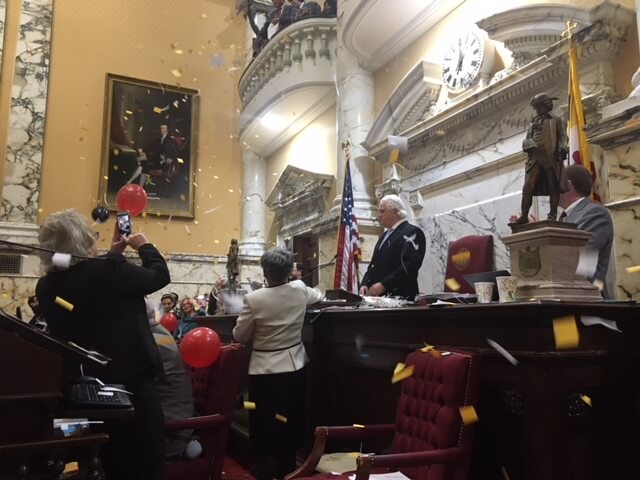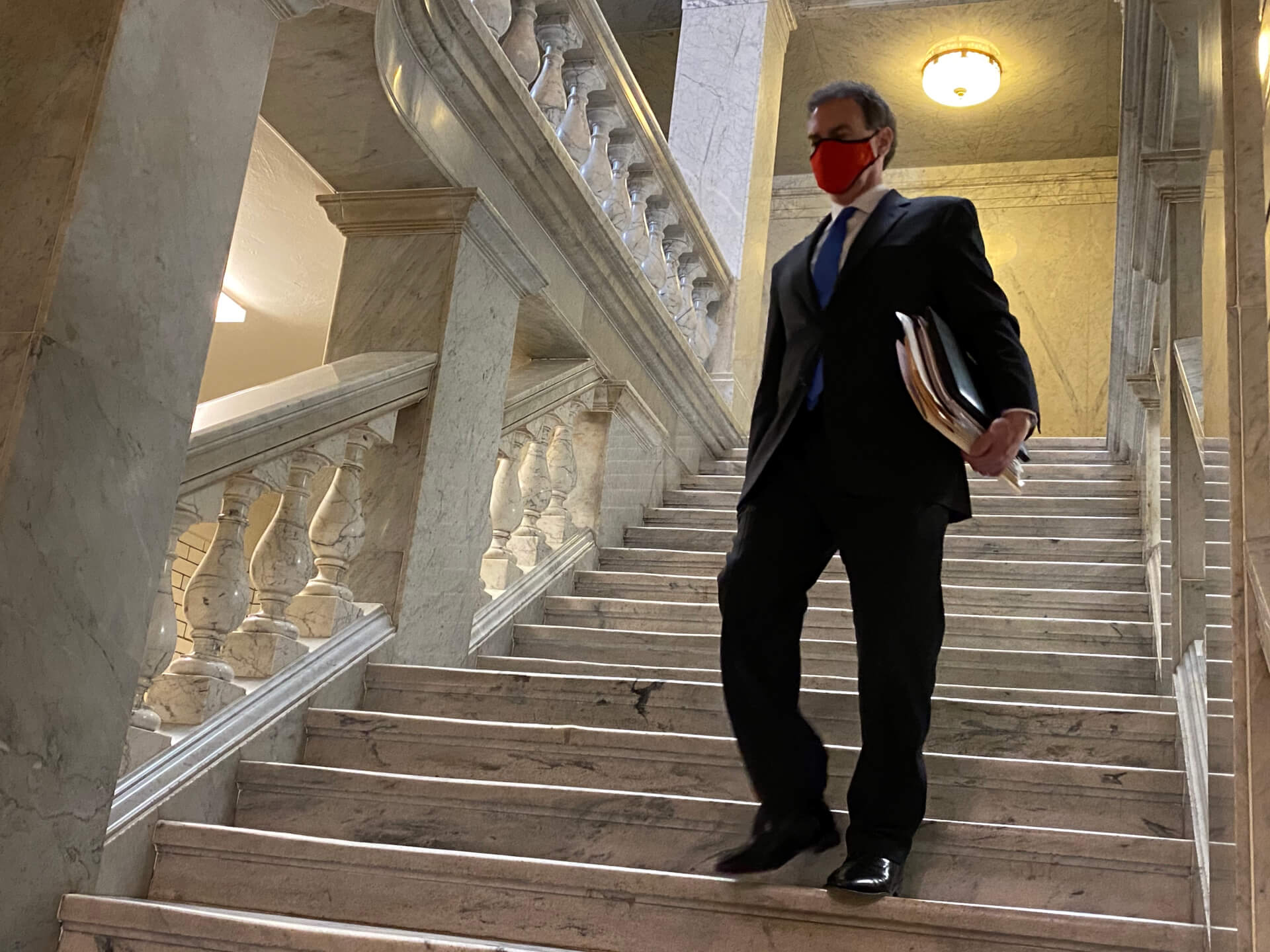Frank DeFilippo: A Huge Sigh of Relief Out of Annapolis

This is the way a Maryland General Assembly session ends, not with a bang but a backyard barbecue.
The hissing sound you hear in the distance is not a head of steam blowing the dome off the State House, but a sigh of relief that the session’s over and the real work of politics is underway.
The 2018 session was a warm-up for the June 26 primary elections. The newly accelerated election calendar compressed the time between the session’s end and election day by nearly three months, heightening anxiety to get back on the campaign trail and to resume fundraising. At the other extreme, the calendar lengthens the stretch between the primary and general elections to six months, leaving much of the summer to lollygag until after Labor Day.
More important, the session set the tone and the tactic for the November general election as a test of whether Democrats can really deliver a vote that proportionately matches their registration numbers. For Democrats, the session had two main purposes – to stigmatize Republican Gov. Lawrence J. Hogan Jr. with the Macbethian stain of President Trump, and to arouse Democrats for a massive voter turnout in November to recapture the governorship so the party can dominate the redistricting process following the 2020 census.

But Hogan has proven to be a nimble politician. He has learned that the best way to defeat Democrats is to act like one. And during the session, Hogan allowed Democrats to have much of what they wanted, with or without his signature. Though appearances count, he had little choice. Republicans are greatly outnumbered in the General Assembly and Democrats usually can muster veto overrides as needed. So Hogan’s watchword for the 90 days has been “bipartisanship,” frequently quoted, largely ignored, but high-sounding nonetheless. Hogan’s twin campaign memes will be bipartisanship and education.
Hogan has been the target of an assault of another kind, and that is the chipping away at executive authority that began as far back as the Dutch-uncle reign of Gov. William Donald Schaefer (D) in the 1980s. A major part of Hogan’s problem is that he listens to Comptroller Peter V.R. Franchot (D), his partner on the Board of Public Works, more often than he should (Franchot talked Hogan into meddling with the school year calendar).
This time the assembly made a preemptive strike on the massive school construction program. They poached the program away from the BPW and parked it under a separate, independent commission to be appointed by the governor, the House speaker and the Senate president. Hogan vetoed the transfer bill, only to face an override by the legislature, which made the bill law.
Franchot was given an earlier, separate spanking by the Assembly when his proposal to give craft breweries more independence was rejected, with obvious glee. (Franchot is a former member of the House of Delegates who left no friends behind in the General Assembly when he was elected comptroller. He is considered a showboat and a freelancer who has no regard for boundaries or others.)
The conventional wisdom is that election-year sessions are subdued and non-controversial so as not to create issues where none exist. For an election year, this session was unusually aggressive and, in many ways, extremely productive. But the meeting had its dark side as well, often mimicking national trends and issues. Over the three months, the session showcased the good, the bad and the ugly – the outlawing of bump stocks, the attachable gizmo that accelerates the fire-power of semi-automatic weapons, the legal cesspool of former Baltimore Sen. Nathaniel T. Oaks (D), and the surveillance tape alleging that a male lobbyist tried to cop a feel of a female senator’s tush.
There was also the profoundly personal and emotional moment when Del. Meagan Simonaire (R-Anne Arundel) revealed that her father, Sen. Bryan W. Simonaire (R-Anne Arundel) encouraged her to try gay conversion therapy when he learned that she is bisexual. Standing applause for Meagan Simonaire accompanied enactment of a bill to outlaw the practice.
And while the assembly was preoccupied with its own tense moments, two more school shootings occurred – at Parkland, in Fla., and at Great Mills in St. Mary’s County – which helped motivate lawmakers to approve funding for greater school security and inspire the kids’ march on Washington and in cities around the world with the promise of huge voter turnouts this year and in 2020.
The victory dance is broad and inclusive this year – a $44.5 billion budget (the legislature’s only legal requirement), millions for schools, even more millions for school safety, $100 million in tax cuts next year to offset Trump’s tax gift to state government, a tax fix to prop up Obamacare’s individual insurance market, automatic voter registration, dedicated funding for the Washington-area Metro system to help entice Amazon’s new second headquarters, $8.5 billion in incentives to lure Amazon to Montgomery County (three of the 20 finalist locations are in the Washington, D.C., region, and Maryland will benefit from whichever is chosen, though less – a lot less – if the District or Virginia wins) and the state’s burgeoning medical marijuana business was expanded to include minority owners, to name a few notable achievements.
Every measure introduced in the General Assembly is important to someone. Many are narrow interest bills designed to please this or that group or to advance the cause or career of its sponsor. It is the function of the legislature to kill bad bills as well as to enact good ones. Among those that did not make the cut are the proposal for Johns Hopkins University to establish its own sworn police force, and Hogan’s proposed omnibus crime bill. Both were viewed skeptically by black lawmakers from Baltimore.
Hogan has earned his chops as a remarkably resilient politician. He has survived two bouts with cancer, the deaths of his father, his sister and his pet dog, which, he Tweeted at the time, died in his arms. Throughout his four years in office, Hogan’s poll numbers have remained consistently high, as high as in the 70s, though recently settled in the comfortable mid-60s. His mainstay is that he has managed to make no group angry, really angry, though for certain there are those who have been disappointed.
Democrats are unaccustomed to being out of power for more than four years. They will be angling to eject the consistently popular Hogan, the Republican with the best chance of serving two terms since Theodore R. McKeldin Jr.’s re-election in 1954. (Since then, Spiro T. Agnew served an incomplete term and left to become vice president; Robert L. Ehrlich Jr. was defeated after one term and rejected in his attempt to return.)
Hogan, for his part, will be engaged in a duel not only with numerically superior Democrats, but also shadow-boxing with the brooding and highly unpopular presence of Trump, an unwelcome backdrop to his own political future in the midnight-blue state. Trump lost Maryland by 26 points. Hogan, so far, has been an artful dodger with a Trump-proof shield – withholding his vote from Trump, panning Trump’s policies regularly, notably on the environment, and picking his fights carefully to avoid becoming a toxic proxy for Trump on the November ballot.
In this regard, Democrats, though they have tried mightily, have, for the most part, failed to render Hogan and Trump as fungible political identities. If anything, the opposite has occurred. Hogan has wriggled and writhed to avoid the rub-off, although Trump, with his manic behavior and non-stop Tweetstorms, has made immunity difficult for Republican officials and candidates.
The adjournment day backyard barbecue, as reported, was listed on the legislature’s weekly social calendar under the sponsorship of the Maryland Catholic Conference. Confession is optional.




 Creative Commons Attribution
Creative Commons Attribution